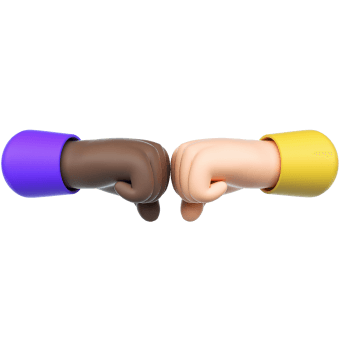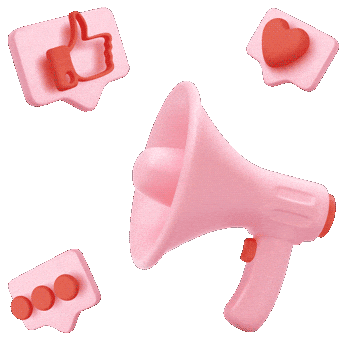Everything you need to know about shadowbans

If you do business with social media, you must know how important it is to maintain a wide reach and appear in user feeds and recommendations. And if you notice an abrupt fall of your metrics, you might have been punished with a shadowban. Keep calm and read our text.
An ordinary ban on social media is not as intricate as shadowbans. The latter have other reasons and other signs and thus need other countermeasures.
Want to know how to recognize and fix a shadowban? We’ll tell you.
What is a shadowban?
You all know what a regular ban is: A user loses access to their page and all the platform’s functions. On the other hand, a shadowban doesn’t restrict any functions. Instead, it affects the order in which a user’s posts appear in other users’ feeds and recommendations. As you may guess, such interference has a direct impact on the performance of the banned user.

Having been shadowbanned, you still can view other users’ content, react to it, and communicate. You can even create and publish your posts, but almost no one will see them. Here’s how it works: The social platform limits your reach and impressions or just makes your content visible to nobody.
Interestingly, the platform doesn’t tell you that you have been shadowbanned. You just keep managing your account but see little or no feedback.
Eventually, a shadowban cuts your reach, chokes your impressions, and impairs your metrics.
In the first place, social media and forum admins created a tool called a “shadowban” to keep violators away. It makes fraudsters think users just don’t like their content, so they just quit. No conflicts, no claims, no complaints.
But over time, shadowban algorithms started haunting terms-of-use-abiding users, either by mistake or for minor misbehavior. Some conspiracy theories have even emerged, saying that people with certain viewpoints are intentionally restricted by social media platforms. On top of that, no social media platform has officially confessed that it uses such a tool.
There are lots of tough points here, but none of them means you can’t fight a shadowban.
Which social media platforms employ shadowbans?
Instagram and TikTok have this tool in their arsenal, though they keep assuring everyone they don’t. When this invisible restriction turns on, reach and impressions decrease sharply, while new users may never even meet a banned user’s post in their feed (unless they already follow such a user).
Specialists argue that not only does Instagram’s shadowban kill reach, but it also makes hashtag-sought posts only visible to the restricted user’s current followers. Still further, a shadowban can expel posts from recommendations. At the end of the day, if you’ve fallen out of Instagram’s favor, you have almost no way to acquire new users.
Important! You need to know a shadowban from a temporary restriction of certain functions or actions (e.g., your ability to comment). The latter is used by the Instagram administration if rules are violated.

On TikTok, a shadowban results in posts vanishing from users’ recommendations—and thus fatal traffic loss.
It’s way more complicated with Twitter. Journalists have carried out studies in a bid to find out whether the platform uses shadowbans. It’s especially intriguing since some users reported that some of their posts don’t make it to the feed.
However, the executives stated that the only way for a user to get “something like a shadowban” is to receive many complaints.
Nobody knows for sure whether Facebook uses shadowbans, but experts say that the social media platform that the reach of every rule violator is being restricted.
Experts note that the shadowban algorithm is so shrewd that it may hide posts and comments of a restricted user from the majority of other network members. However, the friends who they interact with most often will still see them! This is how Facebook curbs the chance that a friend of a disgraced user would tell them they had been shadowbanned.
Other social media platforms (e.g., YouTube) don’t confirm using shadowbans either. But users still complain about suspiciously sharp decreases in reach and impressions in some cases.
Why users get shadowbanned?
Here are the main reasons people get shadowbanned:
- Violating the network’s terms of use. Critical violations (e.g., promotion of violence or terrorism) will inevitably lead to your account being blocked. But obscene language in a video is much less serious misconduct, and this is what may result in a shadowban.
- Abuse of spam mechanisms. We mean phrases like “tag a friend who you would bring to our restaurant” or “share this post with other cat lovers”, and so on. Such tactics don’t always entail a shadowban, but there have been some bad cases. Be careful with such calls.
- Questionable content and hashtags that do not overtly violate the rules but are not welcome. Primarily, we mean things related to violence, sex, bullying, medicine, and weapons. They say even hashtags like #twerk or #dating may result in a shadowban. You might want to use fewer hashtags and pick relevant and neutral ones.
- Using dozens of similar hashtags (especially popular, high-key ones) is another poor strategy. Algorithms might recognize them as spam.
- A few more words about bad content. While the algorithms may overlook them, users tend to complain about what might have hurt, insulted, or frustrated them. The more complaints mention you, the higher your chance of being shadowbanned. Therefore, content value and friendliness are key. Don’t go too far with baiting and provocations.
- Uniqueness also matters. One may get shadowbanned for using another user’s content.
- Fake followers, mass following/liking. Anything massive will be banned. Don’t you use automated services that generate followers and create artificial engagement (at least because they don’t bring the expected result)? Do not participate in marathons inviting you to follow a hundred users, so they follow you back. If you like posts and leave comments like nobody’s business or follow a dozen accounts in a second, that’ll rouse the algorithms’ suspicion.
- Automated posting or even third-party statistics services may also lead to falling out of grace. Do as much as you can on your own, only using built-in tools.
- Clickbait, which is misleading content and screaming headings, may also elicit a shadowban. This is mostly relevant to Facebook.
- Actions that may be recognized as spam (e.g., spamming are direct messages or publishing a pack of posts within a short time).
- As for TikTok, some think that regular re-uploads, deleting older videos, and making too many changes to them may result in a shadowban.
How do you know you have been shadowbanned?
First and foremost, your metrics will reflect the problem. If you see the number of comments, likes, and reach fall abruptly and unexpectedly (while you keep posting content and follow the same strategy), we have bad news for you: you may be shadowbanned. It’s especially true if you see poor reach among new followers.

Reach problems are never a one-time case. If you see that several posts don’t see as many impressions or engagement as they should, and it happens for a few days in a row, it’s time for a shadowban check. If only 1 or 2 posts have audience engagement difficulties, there’s nothing to worry about.
Next, use hashtag search. It’s best to do this from a different account that doesn’t follow yours. If your posts don’t show up for a particular hashtag, it’s not a good sign.
A burner account is a great testing tool. Flick through the feed and check whether the posts of the potentially banned account are there, or ask your followers whether they’ve noticed your posts disappear from their feeds.
There are some special services for checking shadowbans, both free and paid. You can google them, but don’t rely on them too much: they often don’t work well.

You need to be able to differentiate a shadowban from a logical plummet in engagement, audience interest, and organic reach. Always keep in mind the audience burnout. Your users may be tired of similar content, or their interests may have changed.
A change in the subject or content policy may also negatively affect your popularity. Or, due to cancel culture, you may be ignored for publishing unfriendly content. Dull, promotion-resembling, low-quality content will choke your reach without any shadowbans.
How long does a shadowban last?
Many factors—including the nature of the social platform, as well as violation severity and frequency—shape the ban duration. Some say their invisible restriction was lifted in a few days. Others claim their ban lasted for several months.
How to remove a shadowban?
Apparently, the way out you choose depends on why you got banned in the first place. Analyze your potential misconduct (check the list above) and make relevant improvements. Quit using suspicious hashtags, provide quality content, don’t use automation services, and never spam.
You might want to delete the hashtags or posts that the system may have recognized as questionable. Don’t forget, though, that TikTok doesn’t like regular content cleanups.
When a shadowban is suspected, most bloggers ask users to ramp up their feedback: hit more likes, leave more comments, and share more posts. Another thing they do is start purchasing targeted ads to get new followers and show the administration that everything’s all right and they still got it.
A safe way is to sit back, post nothing, and wait until the ban expires. Experts say that this kind of tactic resets the algorithms and helps reach return to previous levels. The minimum suspension period is 3 days, but taking a week-long break is more advisable. You can use this time to prepare a load of new content.
In this context, not only do you need to stop publishing altogether, but you shouldn’t demonstrate any activity at all. Don’t hit likes, don’t respond to messages.
If you think your shadowban is unfair, try contacting the administration and challenging the algorithm action. It may not pan out, but you are free to try.
Seasoned users recommend complaining about a shadowban as if it were a technical problem or fault. Remember that major social media networks (e.g., Instagram) haven’t confirmed they use such mechanisms.
One radical countermeasure is changing the IP address or device from which you post your content. We haven’t done anything like that and can’t tell you for sure whether these steps work.
Observing the rules, generating valuable content, avoiding doubtful tactics like spam and mass following are the best tips that will never let you down and will keep you from getting banned.






